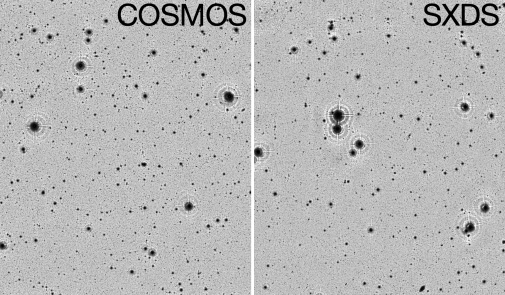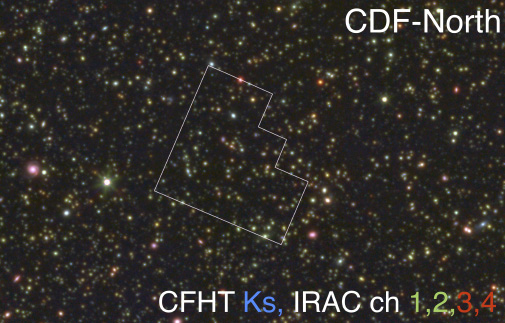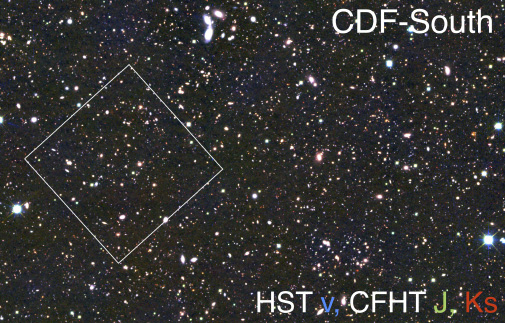Galaxies
Galaxies are fascinating objects in the universe. They are the interface between astrophysics and cosmology.
Galaxies consist of stars, interstellar medium,
black holes, and dark matter. To understand how galaxies form and evolve with time,
we need to understand these celestial bodies as well as physics that governs their motion and their emission and absorption
of radiation. On the other hand, galaxies exist in a dynamic universe whose expansion is accelerated
by a mysterious form of energy, the so called "dark energy." Galaxies form in mass concentrations created by
dark matter. Therefore the distribution of galaxies in the universe and how that changes with time is tightly
related to the nature of dark energy and dark matter, the two most dominant components of the universe, which we
embarrassingly understand very little.
The physics about galaxies is so rich that there can be numerous ways of studying them. I specialize in imaging
observations of distant galaxies at various wavebands, from UV and optical, to millimeter/submillimeter and radio.
A multi-wavelength approach is essential, not only because different wavelengths trace different physics, but also
because certain types of galaxies may only be bright at certain wavebands and faint at others. Only by combining
data from different wavelengths do we obtain complete understanding of the physical processes in galaxies and
complete sampling of different types of galaxies.



